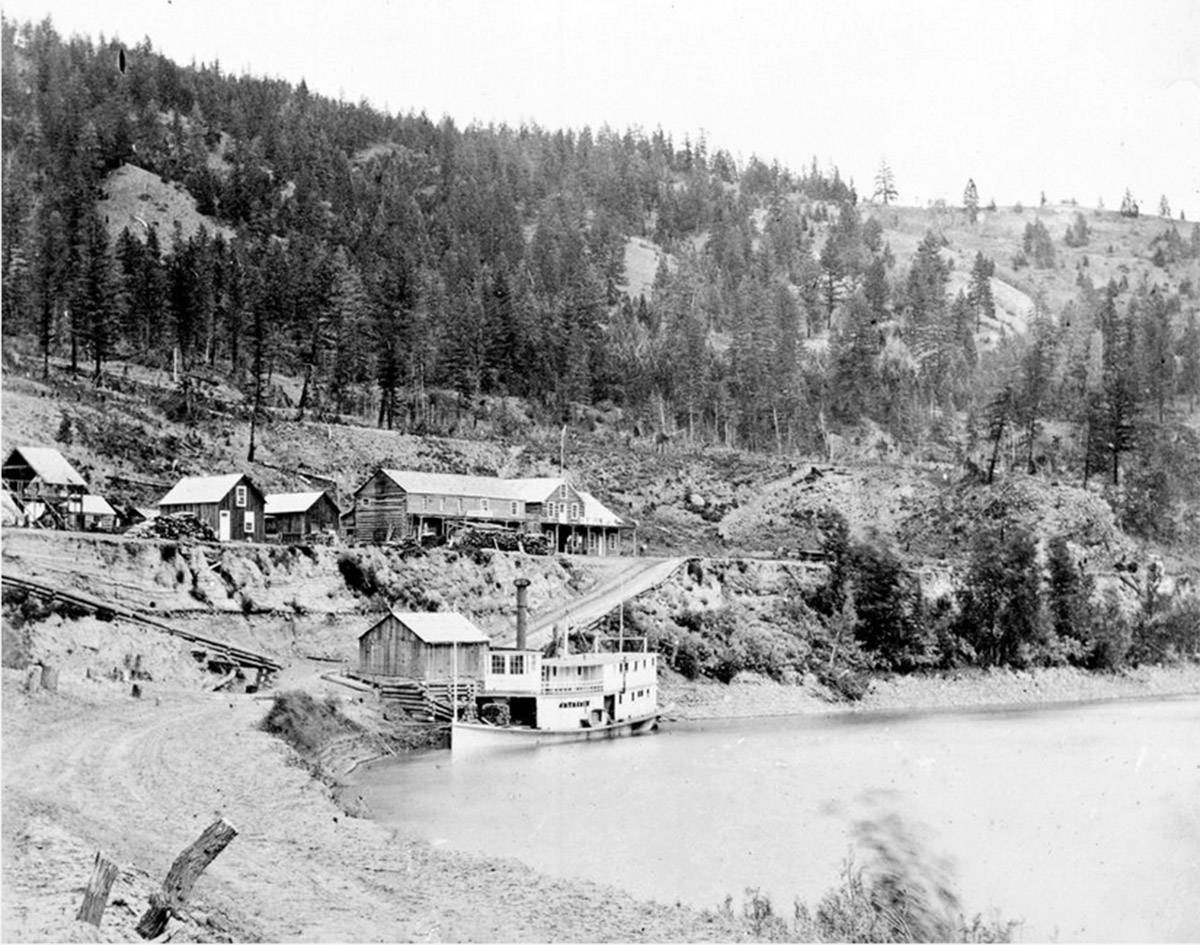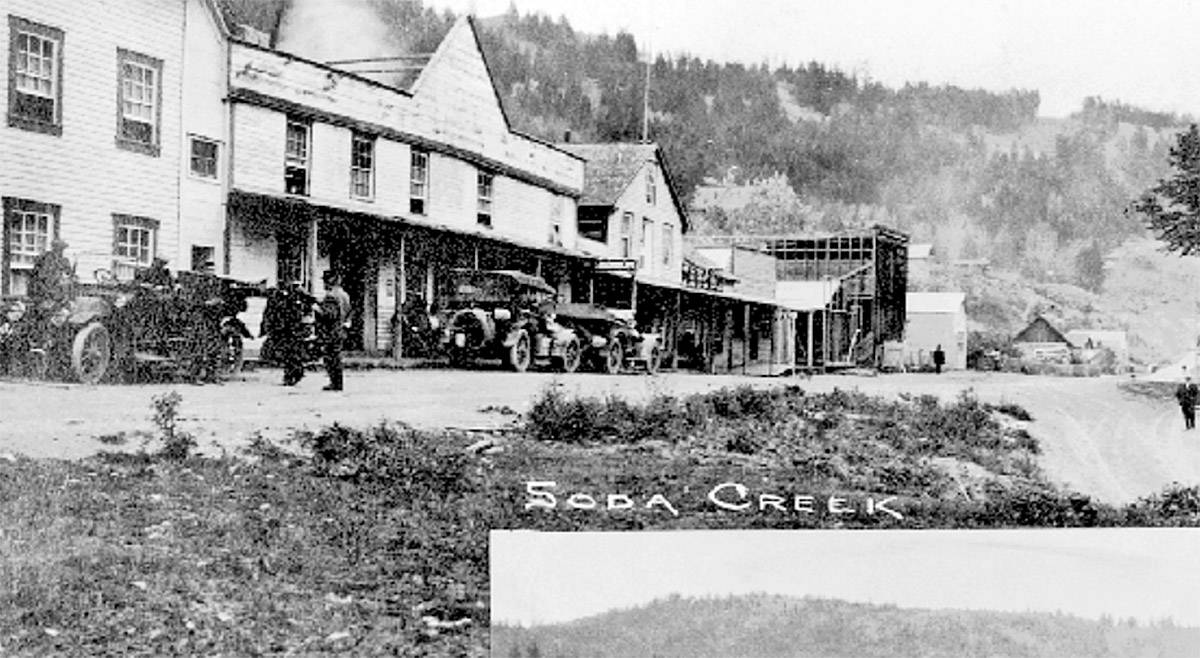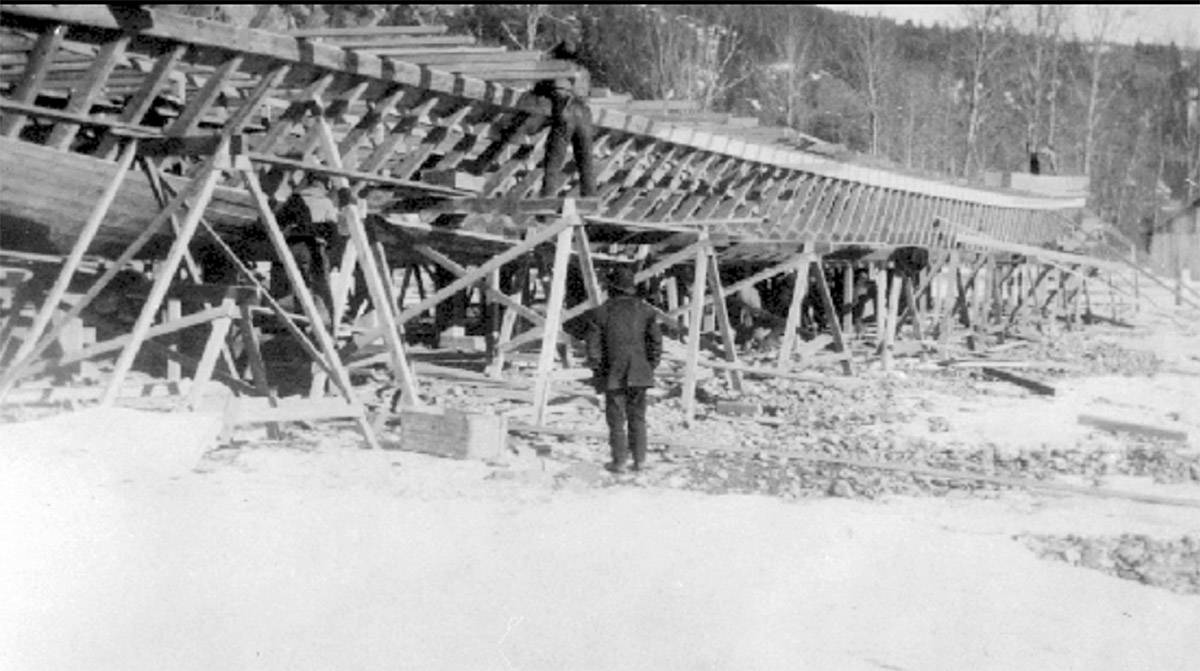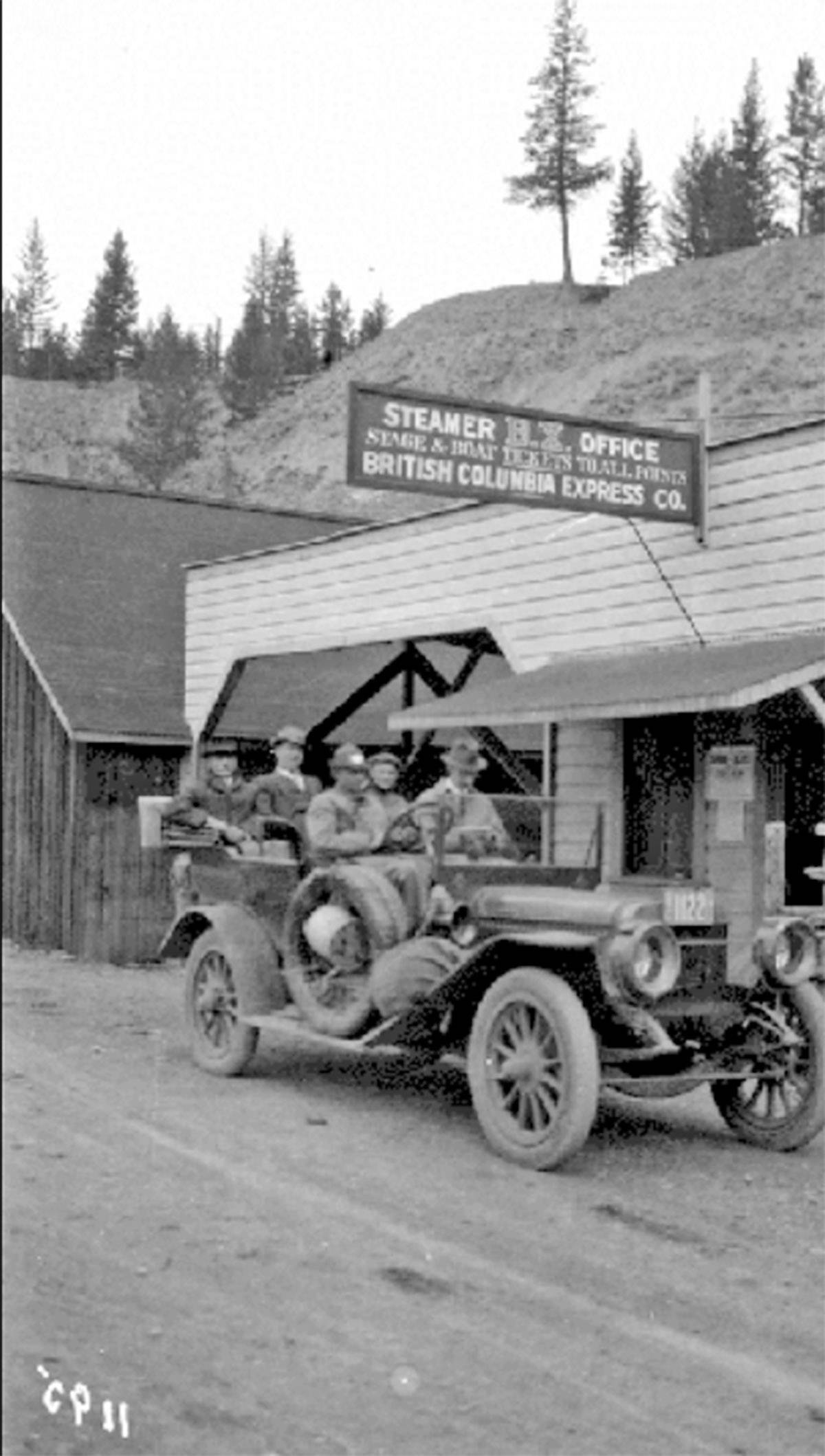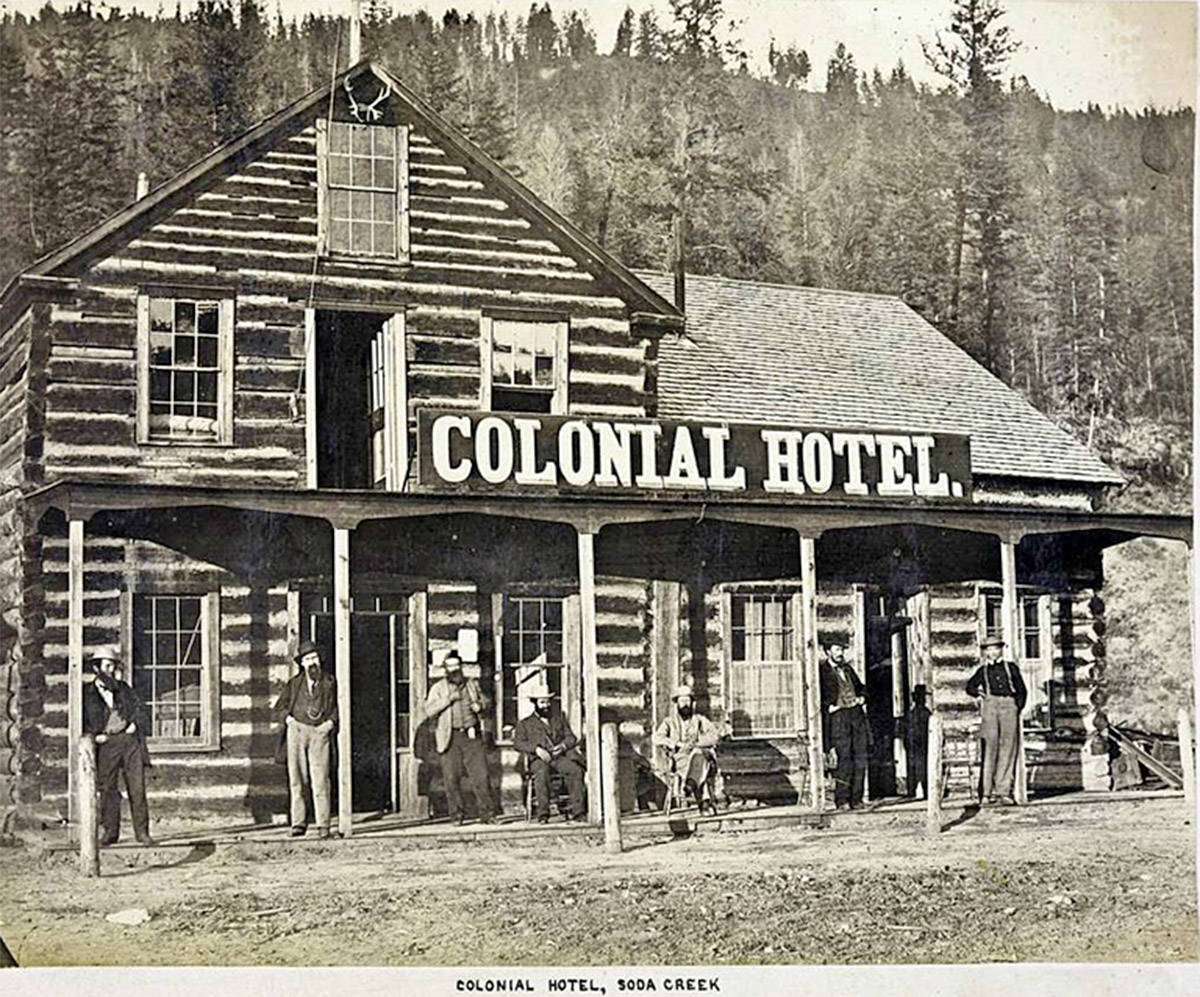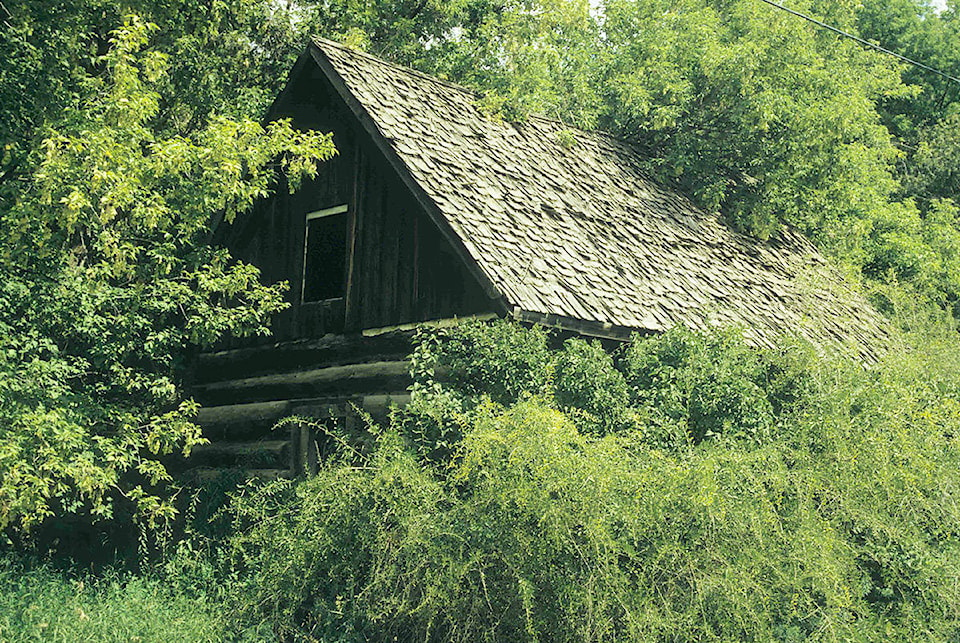By the spring of 1862, the great Cariboo Gold Rush was in full swing, and the government in Victoria had made the decision to build a road to the goldfields.
The road contractor, who was chosen to construct the section from Lillooet to Alexandria, was Gustavus Blin Wright, a proven road builder, and also an astute entrepreneur.
Even while he was negotiating the terms of his road contract with government officials, Wright and a group of investor friends were also working on a plan to build a sternwheeler riverboat to carry passengers and freight up the Fraser River from where the planned road would end to Quesnellemouth (now known as Quesnel). Shipping by riverboat would save time, money and wear and tear on animals and equipment, not to mention providing a lucrative source of income.
Wright’s plans to add this riverboat component were reported in the Victoria newspaper, and were regarded with much interests by merchants and investors in both Victoria and New Westminster.
While the southern part of the Cariboo Wagon Road was under construction, so was a brand new sternwheeler.
It was built just upriver from Fort Alexandria, and launched in May, 1863. Very shortly afterward, a site was chosen for a terminus on the Fraser where the Cariboo Wagon Road would end.
That site was a small bench of land near the mouth of Soda Creek, south of the Hudson’s Bay Company Fort.
This area was considered to be “a feasible place for the approach of mule trains” and provided access to a point on the river from which the sternwheeler could safely navigate its way north.
That first riverboat was the SS Enterprise. It began operations in July of 1863, when the wagon road was completed down to the landing site.
Within two years it had earned its investors three times the $75,000 it cost to build.
Most of the travellers on their way to the goldfields by foot, horseback or wagon took the Enterprise, since the Cariboo Wagon Road extension to Quesnellemouth would not be completed until 1865. With Soda Creek as the southern terminus, passengers leaving on the evening boat from Quesnellemouth had just enough time to reach the roadhouse at Deep Creek, in which, not surprisingly, G.B. Wright held a half interest.
So, with the launching of the Enterprise and the construction of the Cariboo Wagon Road, the government placed a land reserve on the bench area immediately above the river (a second, smaller bench down closer to the river and prone to seasonal flooding was designated for the Chinese prospectors and merchants).
Very quickly, lots were sold and a small town named Soda Creek sprang up.
Robert McLeese (after whom McLeese Lake is named, although he never lived there) and his partner Joseph Senay were two of the first to recognize the potential business opportunity.
That summer (1863) they obtained property close to the riverboat landing area and constructed the Colonial Hotel — a two storey log building with rooms, a saloon and a store.
By August of 1863, a second hotel, the Exchange, which also featured a saloon and a store, was constructed right next to the Colonial.
The owners of this establishment were Peter Dunlevy and his four partners, the same group of men who found gold on the Horsefly River in 1859, thus starting the Cariboo Gold Rush.
At the Exchange Hotel’s store, they specialized in outfitting goldseekers with mining tools and equipment.
They also did a brisk business trading furs with the local Indigenous people.
Peter Dunlevy had also preempted and purchased a large area of land about two miles north of the Soda Creek town site.
This became one of the most successful and valuable farms in the central Cariboo, providing all sorts of fruit, vegetables, meats and grains to the goldfields.
We know this farm today as the Dunlevy Ranch.
It still remains in operation and still produces plentiful and excellent quality crops and beef.
It did not take long for a good-sized community to spring up at Soda Creek.
By 1868, there were hotels, stores, blacksmith shops, saloons, a post office, a flour mill, boarding houses and private residences.
The town had an estimated 300 permanent residents, which hundreds more passing through.
In 1869, Wright added a second sternwheeler, the SS Victoria, to increase the flow of traffic and goods.
Even though the Cariboo Gold Rush had subsided, in the late 1860s the town experienced a mini-boom as gold was discovered in the Omineca region of B.C.
As word spread of this new strike, hundreds more goldseekers and opportunists arrived.
Men, supplies, equipment and produce were shipped upriver to the new and expanding goldfields.
In 1871, the numbers of men who were leaving the Cariboo area to take part in this new gold rush were so high that local farmers feared they would not have enough help to plant their crops for the coming season.
By 1872, the Omineca rush was over, and much of the population of Soda Creek had moved on.
The town remained as a service centre for the riverboats and for the many farms and ranches in the area.
A jailhouse was built in 1903.
A local mill operator, Billy Lyne, got the contract to build it. He milled the lumber, constructed the building and received his payment, which he promptly spent on a binge at the local saloons.
He became so drunk and disorderly that he became the new jail’s first occupant.
After a couple of days of sobering up, he was released to return home broke to an angry wife.
A second population boom of sorts began in 1909, when the Grand Trunk Pacific Railway announced its plans to build a route from Prince George to Eastern Canada.
To connect that route with the Lower Mainland of B.C., the Pacific Great Eastern Railway decided to build a line from north Vancouver to Prince George.
Soda Creek was uniquely situated to ship supplies, men and equipment upriver to the railway construction sites.
The B.C. Express Company built an office and construction yard at Soda Creek, and in the winter of 1909/10 they built their own sternwheeler, the SS BX. The following winter, they built a sister ship, the SS B.C. Express.
The PGE rail route was postponed because of the First World War, but after the war, from 1919 and into the early 1920s, there was a huge push to complete that line, and Soda Creek was right in the middle of the action.
During those years of railway construction, the town prospered as a major supply and shipping centre.
But the riverboats began to be a money-losing proposition.
Cars and trucks and an improved highway system made the riverboats obsolete.
The BS BC Express finished out the 1920 season, and then was beached at Quesnel.
Within a couple of years, the two sister ships were dismantled.
Their engines and equipment were shipped (by rail on the lines they helped to build) to Alberta for use in the steamboats on the Mackenzie River.
After the completion of the PGE, the fortunes of the town of Soda Creek also went into a steep decline.
During the late 1920s, many of the old buildings, including the two original hotels, were torn down.
Gradually the town site was abandoned and left to the elements.
Today, the only old building still standing is Billy Lyne’s jail.
If you know where to look, you can still find the branch road down to the river where the paddlewheelers docked, the main street of the town, the remains of the flour mill and a couple of old residences.
Otherwise, the once vibrant town has been turned into a small, sleepy rural subdivision nestled alongside the Fraser River, visited by only a few, and its history forgotten by most.
